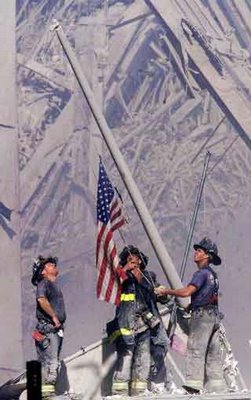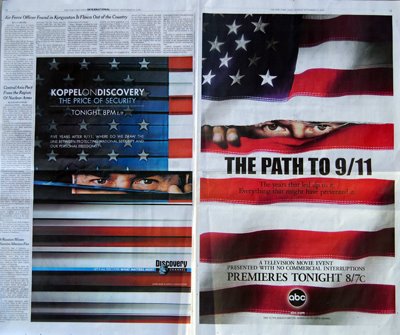
During the Thrillerfest conference held in Phoenix in July, M.G. Tarquini and I had the good fortune to escort Barry Eisler and J.A. Konrath for two days of their book signing tours. This Friday, Spinetingler will publish our co-written story about our trip featuring the authors’ approaches to marketing, their friendship and their great sense of humor.
During our journey, we interviewed both authors with the intent of putting together a classic interview article. But, as our trip evolved, we realized that an interview-style article couldn’t capture everything we wanted to portray. Instead, we wrote our article as a narrative feature story. And, as is so often the case with writing, we sacrificed some of our favorite quotes for the sake of the story. The excerpt below features one of my favorite conversations.
We asked both authors to tell us the story of their road to publishing. J.A. Konrath -- friends and family call him Joe -- labored for 12 years before he published his first book, and might have given up if not for his encouraging wife. Barry Eisler worked on his book for five years, and, on his 51st query, found an agent. Then, he spent another three years making extensive revisions before finally bringing his first book to market. Once the first rights to their books were sold, both authors became overnight success stories.
In the following excerpt, the authors discuss Barry’s experience working with his agent to revise his novel and bring it to market:
Barry: My agent was the first to really devote a lot of editorial effort to what I’d written. His message was pretty simple: he said ‘I think you have talent. I can see that in here. I don’t think this manuscript is commercial-grade yet, and I’ll tell you why. If you agree with me, then we should revise it and we can work together. And if you don’t agree with me, then I may not be the right agent for you. You have to make that decision for yourself.’
Though his comments were really extensive, and it was a little depressing to realize how far I was from the finish line when I thought I was pretty close. I recognized that his comments were good. The thing wasn’t what it needed to be.
Joe: How did you recognize that?
Barry: I don’t know.
Joe: Because it’s very hard to be objective when you’re looking at your own work.
M.G.: You never had a crit partner?
Barry: No, I was stupid that way. I could have gotten better a lot faster if I would have read how-to books or gone to certain writer’s conferences. In anything you’re trying to acquire, whether it’s a new language or a martial art or a musical instrument or writing a novel, there’s an optimum blend of theory and practice, and I didn't have anything remotely like that optimum blend. Mostly it was all practice and no theory, except in so far as you get theory inadvertently by reading a lot. And if I’d added just 10% theory to the mix, I’d have gotten better at writing much, much faster.
Since I published my first book, I’ve read a lot of how-to books and been to a lot of conferences, mostly in a teaching capacity, and I’ve realized there’s a ton of good information out there. I wish I’d known enough to go seek it when I was writing my novel.
I don’t know how I recognized that what my agent was telling me was right. It’s a mystery how I’ll work on a scene, and I think it’s good that day, and I write more. Then the next day I go back, and I look at what I wrote, and it’s not quite right, so I play with it some more. It could be anything – dialogue, description, setting, whatever. The third day, I go back, and it’s getting closer, but it’s not quite right. And then there is a day when I look at it, and it’s perfect. It’s perfect because there’s nothing more I can do to it. How do I know? Because to judge something like this, you must have some template by which you measure it, right? What is that template? I don’t know.
So when my agent told me there were problems in the manuscript, there must have been a template existing in my mind because I wasn’t flying blind. It wasn’t as though he was trying to guide me and my eyes were closed and he was saying ‘Trust me. I’ll get you there.’ It was more like he said ‘I think this is the way to go,’ and I could see it. It made sense to me.
It took me a long time to implement all those changes, quite a few series of revisions. Each time I’d send it to him, he’d write back and say, ‘Well you addressed this, this and this, but I still see this problem and that problem,’ and I’d say, ‘Damn he’s right again.’ And it hurt, because I just desperately wanted to be done at that point. I’d been working on this thing for years, a lot of extensive rewrites.
Finally, in the summer of 2000, I sent him a manuscript thinking again that it was finished. At this point I was inured. I thought, ‘I trust this guy. He’s giving me good advice. I can sense that.’ I fully expected him to come back and say, ‘It’s better, I can see you addressed these things, but we still need to get this or that aspect up to speed.’ I was braced for that, and I was fine with that because I was just not going to quit.
But instead his e-mail said, ‘Barry, this is a terrific rewrite. There are just a few problems we need to address, but I see no reason why we can’t take this out for auction.’ And I actually started to cry. I printed out the e-mail and just wordlessly took it into the kitchen and showed it to my wife, wiping tears from my face.
* * *
Check out the soon-to-be-published Fall issue of Spinetingler for the rest of this story, and for many other features, interviews and thrilling short stories!
thriller fiction writing


